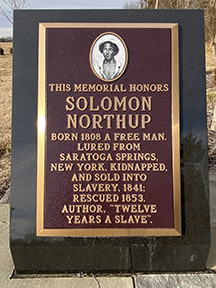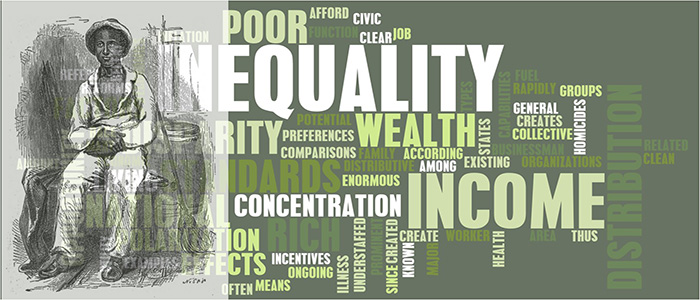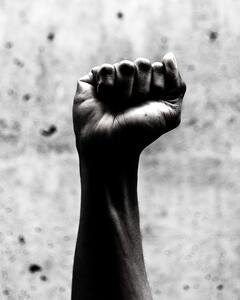I’m going to pull the thread one more time. Writing about the slave trade in D.C. led me to the story of Philp Reed. His marker at Harmony Memorial Park was beside Solomon Northup, the author of 12 Years a Slave. The connection lies in the fact that Northup, a free Black man, was kidnapped into slavery off the streets of the District. However, there was an irony to this whole concept that struck me as I considered Northup’s plight. The enslavement of free Black people still exists.
 It can masquerade as high unemployment, lower wages, less access to capital, or lower quality education. It sometimes camouflages itself in subtle slights that are almost imperceptible to the majority. History, COVID, and police violence against Blacks tell a different story of enslavement. At its core slavery is the practice of being deprived of the same rights and liberty of the majority. Each section below highlights not only racial disparity but the accumulation of disparities heaped one upon another. The facts below tell the tale.
It can masquerade as high unemployment, lower wages, less access to capital, or lower quality education. It sometimes camouflages itself in subtle slights that are almost imperceptible to the majority. History, COVID, and police violence against Blacks tell a different story of enslavement. At its core slavery is the practice of being deprived of the same rights and liberty of the majority. Each section below highlights not only racial disparity but the accumulation of disparities heaped one upon another. The facts below tell the tale.
The Slavery of the Lack of Quality Education
Education is often held as the key to success. That being said, Blacks find themselves on both sides of a bad coin. Access to quality education can be a challenge while having a quality education is no guarantee of success. Although the US Census shows considerable progress, 88% of Blacks have a High School Diploma with 26% a Bachelor’s Degree, The United Negro College Fund reports 9 chilling statistics that still enslave Black Americans.
- African American students are less likely than white students to have access to college-ready courses.
- Even when Black students do have access to honors or advanced placement courses, they are vastly underrepresented in these courses.
- African American students are often located in schools with less qualified teachers, teachers with lower salaries and novice teachers.
- Research has shown evidence of systematic bias in teacher expectations for African American students and non-Black teachers were found to have lower expectations of Black students than Black teachers.
- African American students are less likely to be college-ready. In fact, 61 percent of ACT-tested Black students in the 2015 high school graduating class met none of the four ACT college readiness benchmarks, nearly twice the 31 percent rate for all students.
- Black students spend less time in the classroom due to discipline, which further hinders their access to a quality education. Black students are nearly two times as likely to be suspended without educational services as white students. Black students are also 3.8 times as likely to receive one or more out-of-school suspensions as white students.
- Students of color are often concentrated in schools with fewer resources. Schools with 90 percent or more students of color spend $733 less per student per year than schools with 90 percent or more white students.
- According to the Office for Civil Rights, 1.6 million students attend a school with a sworn law enforcement officers (SLEO), but not a school counselor.
- In 2015, the average reading score for white students on the National Assessment of Educational Progress (NAEP) 4th and 8th grade exam was 26 points higher than black students. Similar gaps are apparent in math. The 12th grade assessment also show alarming disparities as well, with only seven percent of Black students performing at or above proficient on the math exam in 2015, compared to 32 percent white students
The Slavery of Fair Housing
Title VIII of the Civil Rights Act is also known as the Fair Housing Act of 1968. It prohibited discrimination concerning the sale, rental, and financing of housing based on race, religion, national origin, and sex. Yet, over 60 years later discrimination persists. The Urban Institute unveils 5 disturbing facts about the fair housing crisis today.
1. The current 30-percentage-point gap between Black and white homeownership is larger than it was in 1968, when housing discrimination was legal
2. Black homeowners have been the slowest to recover from the Great Recession, and their homeownership rate has decreased to below pre-crisis levels.
3. Homeownership is lower for Black college graduates than for white high school dropouts
4. Black borrowers are less likely to meet the traditional credit standards necessary to qualify for a mortgage
5. Even when accounting for individual factors such as marital status, income distribution, FICO scores, age, median household income, and city segregation, 17 percent of the Black-white homeownership gap remains unexplained.
Even when Blacks do attain homeownership the playing field is still tilted. Homeownership is how whites have accumulated wealth over generations. Property appreciates over time thus creating wealth. However, Black homeowners find that homes in their neighborhoods don’t appreciate at the same rate as their white counterparts. The Center for American Progress states, “devaluation of homes in Black neighborhoods combine to constrict the ability of African Americans to build equity and accumulate wealth through homeownership”.
The Slavery of Access to Capital
The third roadblock to Black prosperity is the lack of access to capital. Black communities and businesses suffered disproportionately during the COVID pandemic. Black businesses were the last to receive loans during the Paycheck Protection Program (PPP). They confronted a number of obstacles applying for PPP. Issues ranged from banking discrimination to loan terms that secluded a significant number of Black business structures. These disparities highlighted the systemic problems Black businesses have accessing capital to build and strengthen businesses.
The U.S. Department of Commerce’s Minority Business Development Agency reports that “A review of national and regional studies over several decades indicates that limited financial, human, and social capital, as well as racial discrimination, are primarily responsible for the disparities in minority business performance. Inadequate access to financial capital continues to be a particularly important constraint limiting the growth of minority-owned businesses.
Some corporations are moving to remedy these obstacles. The Rockefeller Foundation committed $10 million of its $65 million commitment to America’s working families to help eliminate barriers to access capital and credit among small businesses operated by Black and Latinx owners in 10 cities. Comcast unveiled a Representation, Investment, Strength, and Empowerment Program (RISE) to “provide monetary grants to help Black, Indigenous, and People of Color (BIPOC)-owned, small businesses grow as they navigate the challenges of the pandemic”.
There are also a number of government agencies that also assist minority businesses. Here is a brief list below.
- Backstage Capital
- Community Development Financial Institutions Fund
- Founders First Capital Partners
- Grants.gov
- Harlem Capital Partners
- Humble Ventures
- Kapor Capital
- Minority Business Development Agency
- Small Business Administration (SBA)
Achieving Full Freedom
In H.R.40 – Why Reparations Matter we discussed how reparations can help overcome centuries of systemic racism. That is but a small down payment on overcoming the enslavement that still hinders our full economic prosperity. Solomon Northup fought to regain his freedom because he knew what freedom felt like.
Overcoming the systemic obstacles of education, fair housing and access to capital requires determination and continued perseverance. No matter how much COVID and Black Lives Matter have been exposed these systemic disparities we cannot count on benevolence and enlightenment alone for a sustained path forward.
“It is not the fault of the slaveholder that he is cruel, so much as it is the fault of the system under which he lives. He cannot withstand the influence of habit and associations that surround him. Taught from earliest childhood, by all that he sees and hears that the rod is for the slave’s back, he will not be apt to change his opinions in maturer years.” – Solomon Northup
***
Corporations are rushing to help minority-owned businesses. Is that enough?
Startup Financing Trends by Race:How Access to Capital Impacts Profitability
Breaking Barriers to Credit and Capital Access for Black, Latinx, and Women-Owned Businesses
Minority Access to Capital and Employment
The New York Times’ 1853 Coverage of Solomon Northup, the Hero of “12 Years A Slave”


















Add comment